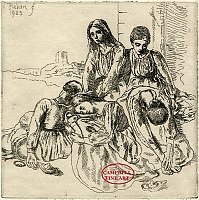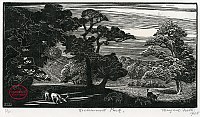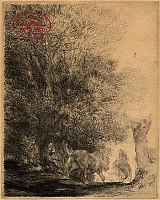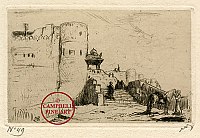Campbell Fine Art specialises in original hand-made prints of museum quality, ranging from Old Masters to the present day, with a particular stress on British original prints from 1740-1950. After 15 years of collecting, Campbell Fine Art was established by Michael Campbell in 1988 and during the past 35 years has supplied rare hand-made original prints to almost every major museum print room worldwide. Campbell Fine Art's stock of original British Prints remains one of the largest in the world.
Publications and books
here.
Exhibition
Stephen Gooden (1892 - 1955)
The finest line engraver of his time.
Visit the exhibition here >
Past Exhibitions here >
Reference works on
John Martin (1789-1854) click here.

![[Town houses, Cornwall] by Eleanor Mary Hughes [Town houses, Cornwall] by Eleanor Mary Hughes](/u/pp/eleanor_hughes_etching_town_houses_drypoint_1_thm.jpg)
![[The Harbour Wall] by Alexander J. Heaney [The Harbour Wall] by Alexander J. Heaney](/u/pp/heaney_etching_harbour_wall_thm.jpg)
![[The Entrance to a London Underground Station at Night] by Herbert Cutner [The Entrance to a London Underground Station at Night] by Herbert Cutner](/u/pp/cutner.undergroundstation_thm.jpg)







![[Town houses, Cornwall] by Eleanor Mary Hughes [Town houses, Cornwall] by Eleanor Mary Hughes](/u/pp/eleanor_hughes_etching_town_houses_drypoint_1_thm.jpg)
![[The Harbour Wall] by Alexander J. Heaney [The Harbour Wall] by Alexander J. Heaney](/u/pp/heaney_etching_harbour_wall_thm.jpg)
![[The Entrance to a London Underground Station at Night] by Herbert Cutner [The Entrance to a London Underground Station at Night] by Herbert Cutner](/u/pp/cutner.undergroundstation_thm.jpg)





